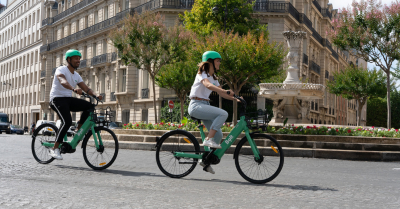What is sustainable transport?

As the UN observes World Sustainable Transport Day on November 26, we take a look at what it means for Indian cities
All of us hate traffic jams. A person living in Mumbai spends an average of 9 days every year just being stuck in traffic, according to the India Traffic Report. 2019. There is a lot that citizens, like you and me, can do to change this Sustainable transport, according to the United Nations, can ease the pain of commuting through cities for everyone, including those with special needs.
Public transport
There are over 34 crore motor vehicles on Indian roads now, compared to a mere 14 crore in 2011 While the number of vehicles keeps growing meterorically, there aren't enough roads and parking spaces to accommodate all of them. The result -long winding traffic craints, parking problem , and a spike in road accidents.
At least one road accident was reported within every three minutes in India in 2022. A total of 1.68 lakh lives were lost. Despite all the data, faster bikes and bigger SUVs continue to be the aspirational purchases for the indian public, encouraged by loans and regulatory easements provided by the government. Mobility experts say public transport is the one and only panacea to this problem. it will help reduce road accidents, reduce carbon emissions, and resolve the space crunch that we are facing on roads and parking lots. But in the current form, public transport in India is plagued by many challenges.
Challenges to public transport. While policymakers keep pushing us to use public transport regularly, the fact remains that most of our casting systems are already full and overburdened. The Mumbai local trains, for instance, carry a whopping 80 lakh passengers a day By comparison, the local trains in Chennai ferry about 25 lakh Cities invested heavily in metro mil to reduce the burden on existing systems, and provide connectivity to new areas. While the public uptake has been encouraging, last-mile connectivity remains a challenge Last-mile connectivity means ensuring passengers have a reliable mode of commute from metro stations to their final destination. Providing rental or free cycles, ensuring metro stations are located near bus stands, commercial junctions, providing shuttle bus services, are some options that are being explored for last-mile connectivity on a trial-and-error basis. While these efforts are yet to bear fruit, lessons are being learnt across cities for implementation on a wider scale.
Pedestrians ignored
Indian cities are fast becoming a nightmare for pedestrians. The Indian Road Congress has clearly laid out guidelines on the size of footpaths to be laid based on the size and category of roads. However, these norms are constantly flouted. Houses cutting into footpaths to build driveways and shops and illegally parked vehicles encroaching walking spaces are a common sight across our cities today.
A long-term study by IIT Madras showed that between 2009 and 2017, 80% of road accidents in Chennai involved pedestrians on footpaths or at road crossings. Since then, Chennai has tried to popolarise the concept of pedestrian plazas, by promoting big, dedicated walkways in various parts of the city. The initiative has been reasonably successful.
Electric vehicles
After walking and public transport, electric vehicles are the next best bet. While they do not remote universal access, they do mitigate the impact of vehicular and public transport, electric vehicles are the next best bet. While they do not promote universal access, they do mitigate the impact of vehicular pollution on the environment. Still, concerns remain as most of the electricity generated today in the country comes from burning dirty coal. The disposal of EV batteries-which are toxic to the environment is also a concern.
Sustainable transport is about building systems that can be used by anybody and everybody. It has to be affordable for the poor, accessible for the disabled, and seamless for the busy office-goers. As citizens, it is our duty to push the envelope with policymakers to make sustainable transport a reality in our cities.
Picture Credit : Google